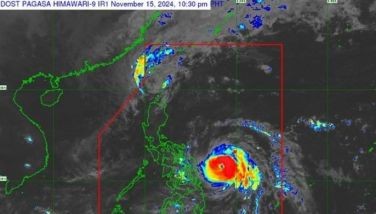WB sounds alarm on rising global food prices
MANILA, Philippines - Global food prices between January and April increased by four percent from year ago, driven mainly by drought in the US, unrest in Ukraine and rising demand in China, a report from World Bank’s Food Price Watch showed.
“This spike in prices puts an end to a downward trend sustained since August 2012,†the World Bank said.
The report said the leap was led by wheat and maize, up 18 percent and 12 percent, respectively.
As a result, international food prices in April were only two percent lower than a year ago and 16 percent below their record level in August 2012, the bank’s quarterly food price report said.
“Increasing weather concerns and import demand – and, arguably, to a lesser extent, uncertainty associated with the Ukraine situation – explain most of the price increases,†the report said.
The surge in wheat and maize prices took place despite last year’s bumper harvest as well as projections of record grain harvests this year.
Rice prices increased in Myanmar and Somalia, but declined in Thailand (28 percent) and Cambodia (11 percent).
In the Philippines, rice prices rose by 27 percent for regular milled variety in Metro Manila, vis-Ã -vis national average increase of 18 percent for the well-milled variety.
The Food and Agriculture Organization (FAO) said low imports and stocks plus the high cost of oil and electricity had also played a role in jacking up food prices in the Philippines.
The average global price of crude oil rose three percent to $104 a barrel.
The World Bank said the global dry spell, particularly in the US, as well tensions in the Ukraine would have more impact on food prices in the coming months.
“Over the next few months, we must watch these prices carefully, making sure that any further increases do not put additional pressure on the least well-off around the world,†said Ana Revenga, WB acting vice president for Poverty Reduction and Economic Management Network.
Ukraine, the world’s sixth-largest wheat exporter, saw domestic wheat prices jump by 37 percent, driven in part by currency depreciation.
“Geopolitical tensions in Ukraine have not disrupted exports so far, but might have effects on future production and trade if uncertainty increases,†the report said.
Overall, international wheat prices soared by 18 percent quarter-over-quarter.
“Such a steep price increase had not occurred since the months leading to the historical peak in the summer of 2012,†the report said.
While local prices have largely been stable, those in other countries have experienced fluctuations.
Monitored markets in Ukraine, Ethiopia, Sudan and Kyrgyzstan saw some of the sharpest wheat price increases, while in Argentina and Pakistan, prices decreased.
Maize prices went up considerably in Ukraine and Russia, but fell sharply in Mozambique.
In its report, the World Bank also called for closer monitoring of food prices to prevent food riots and ensure stability.
According to the lender, 51 food riots have occurred in 37 countries since 2007, most of them linked to a jump in food prices and aimed at local authorities.
“Food price shocks can both spark and exacerbate conflict and political instability, and it is vital to promote policies that work to mitigate these effects. Adequate monitoring is the first step in that direction,†the World Bank added.
Last year, the World Bank Group committed $8.1 billion in assistance to agriculture and related sectors.
- Latest
- Trending




























